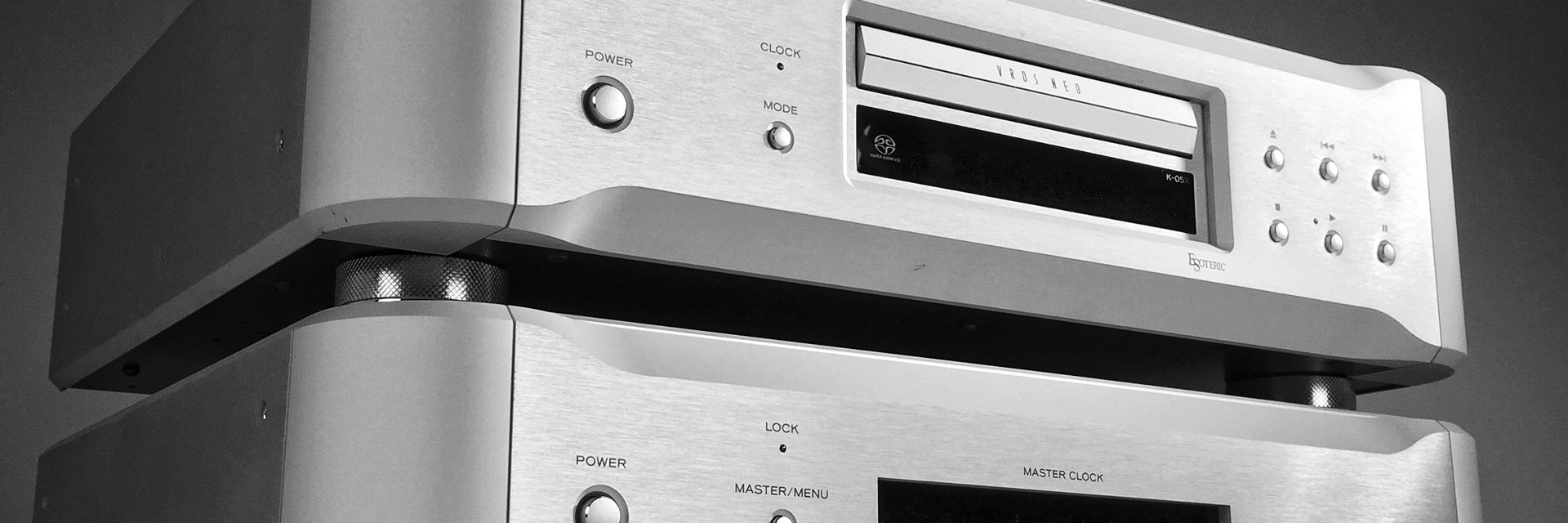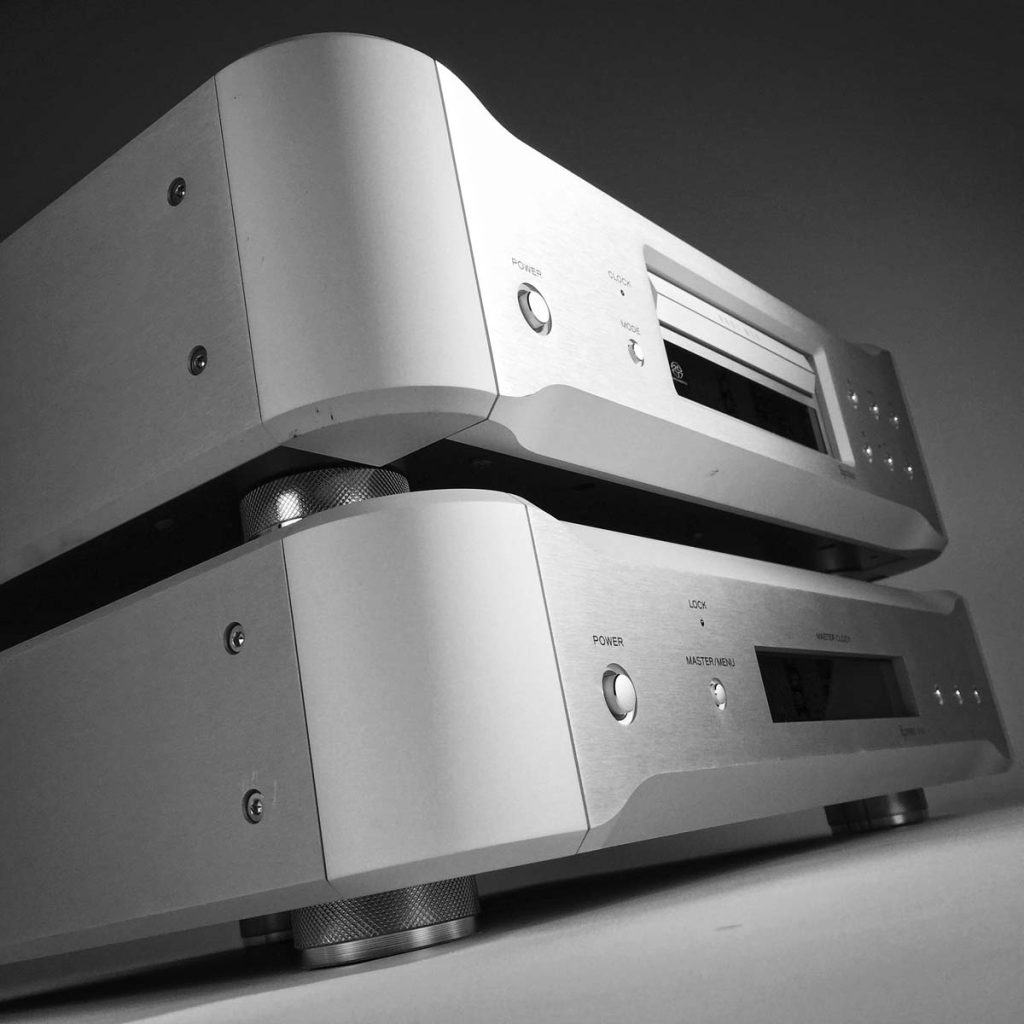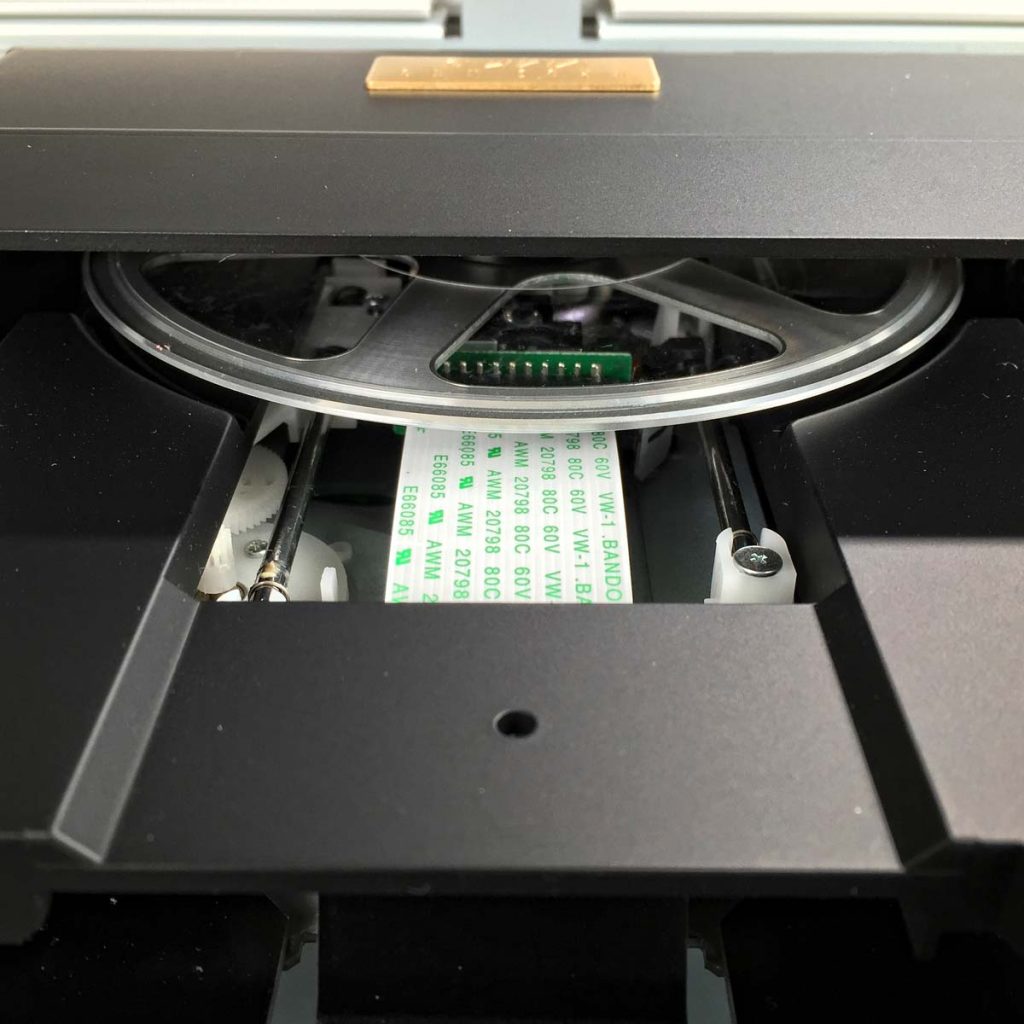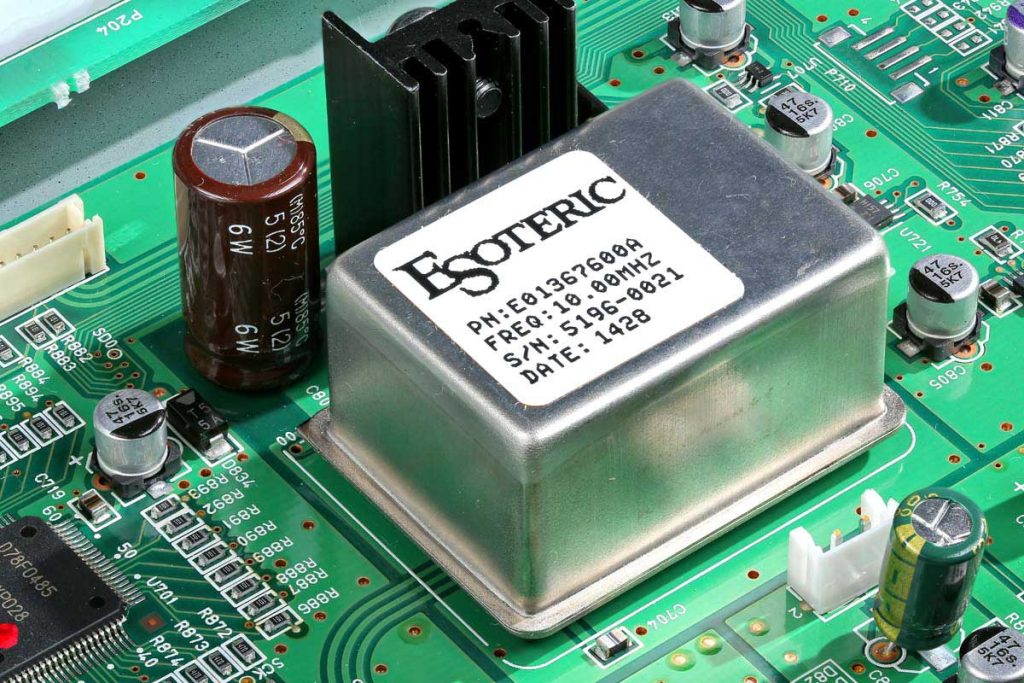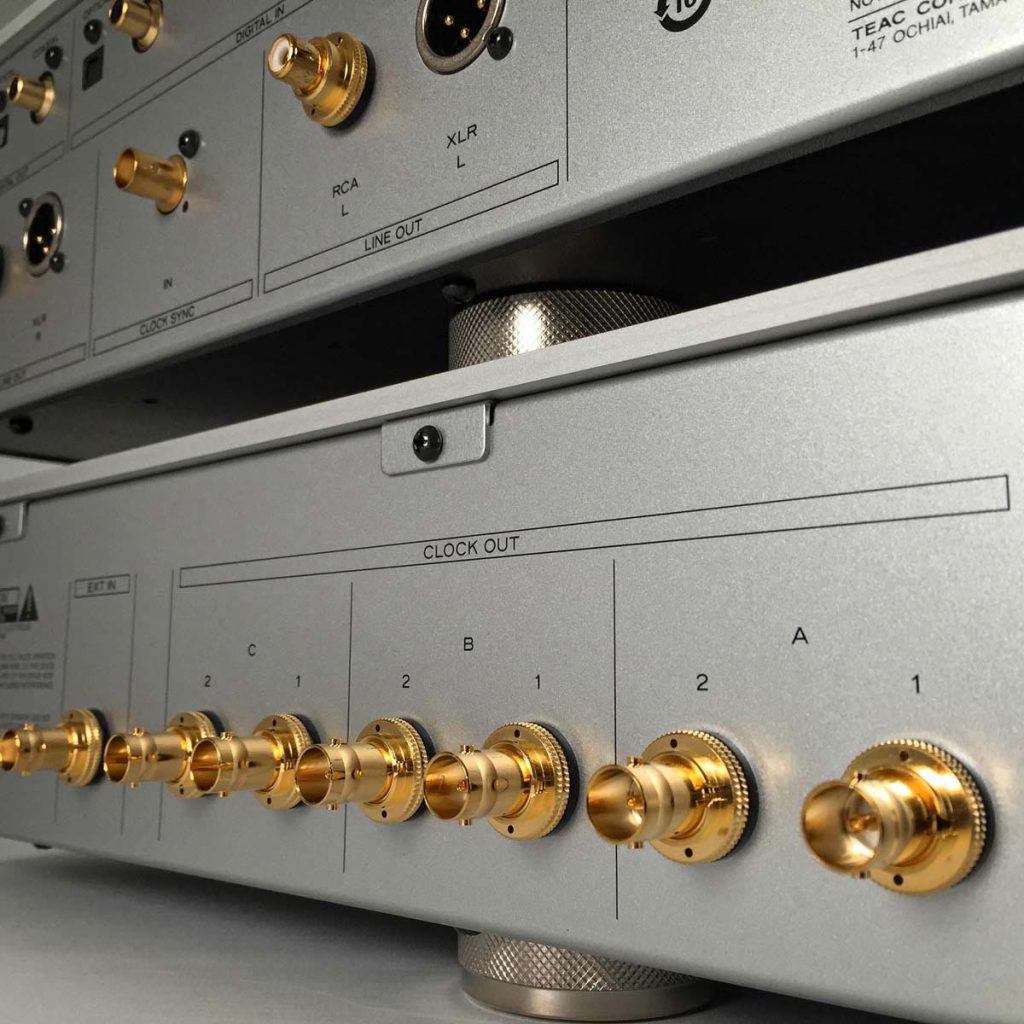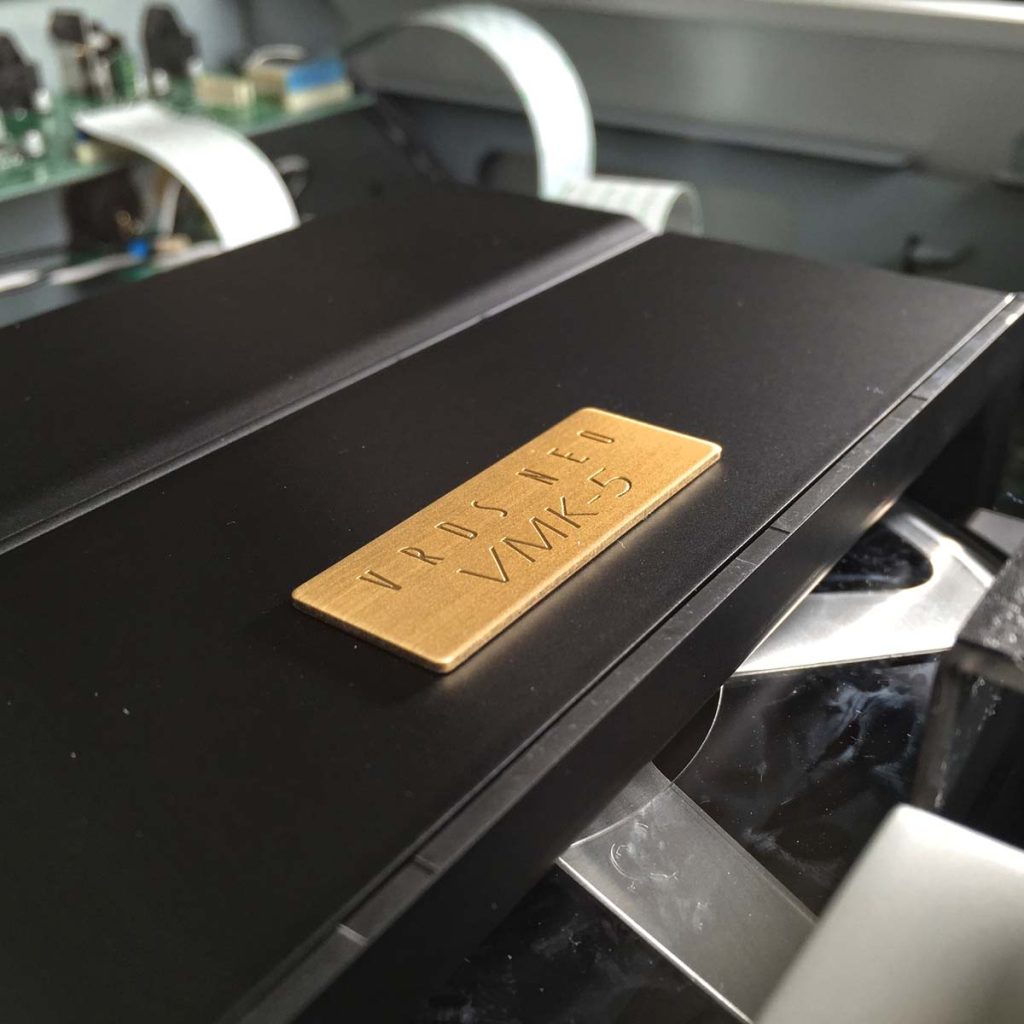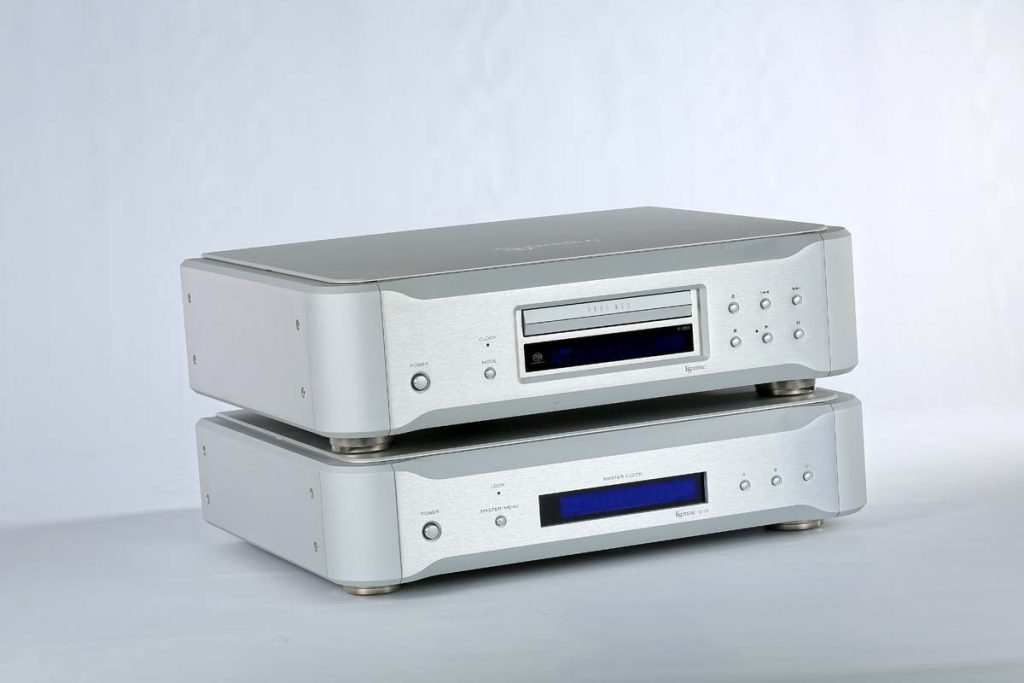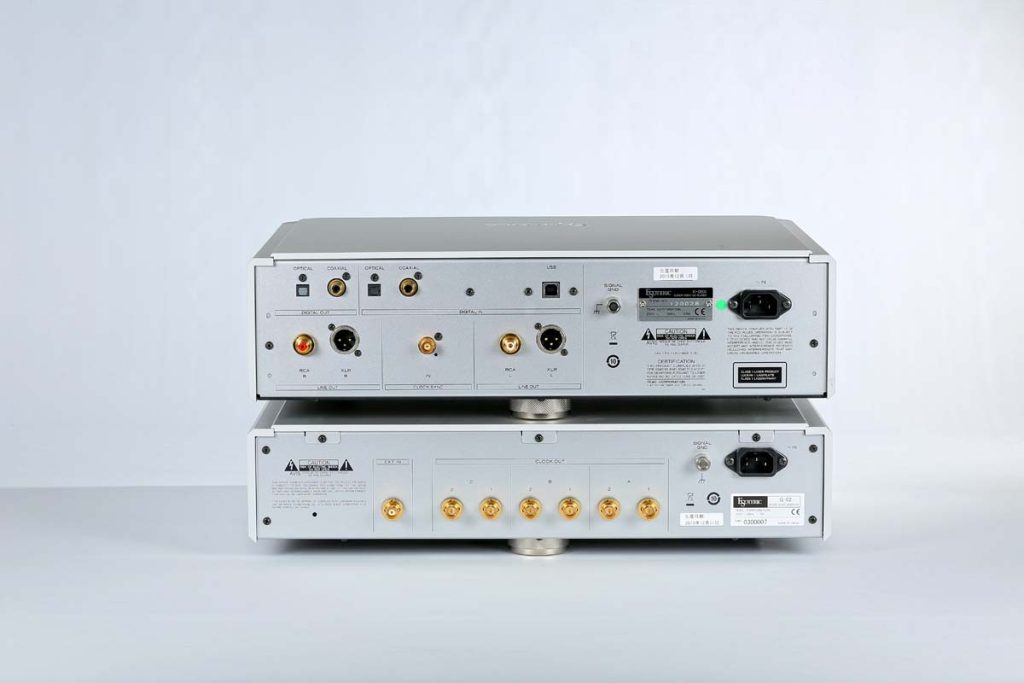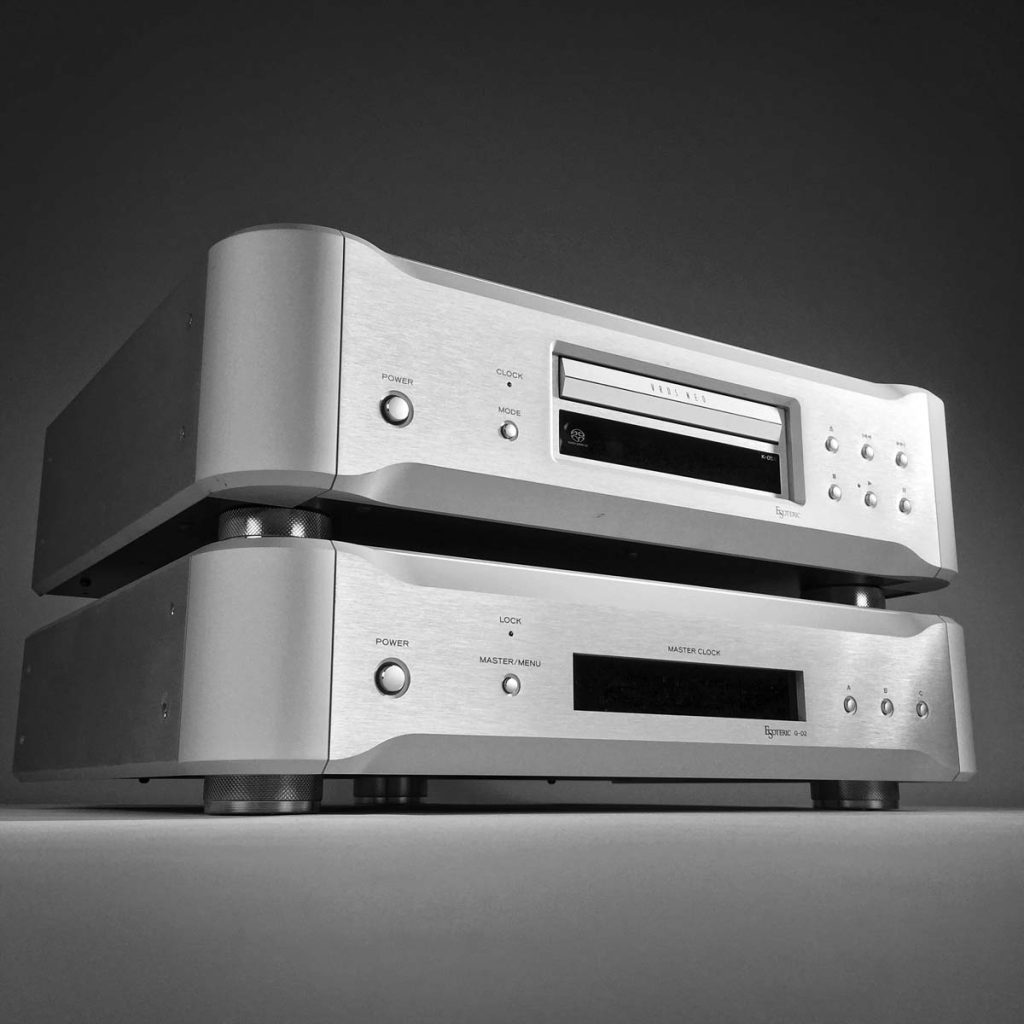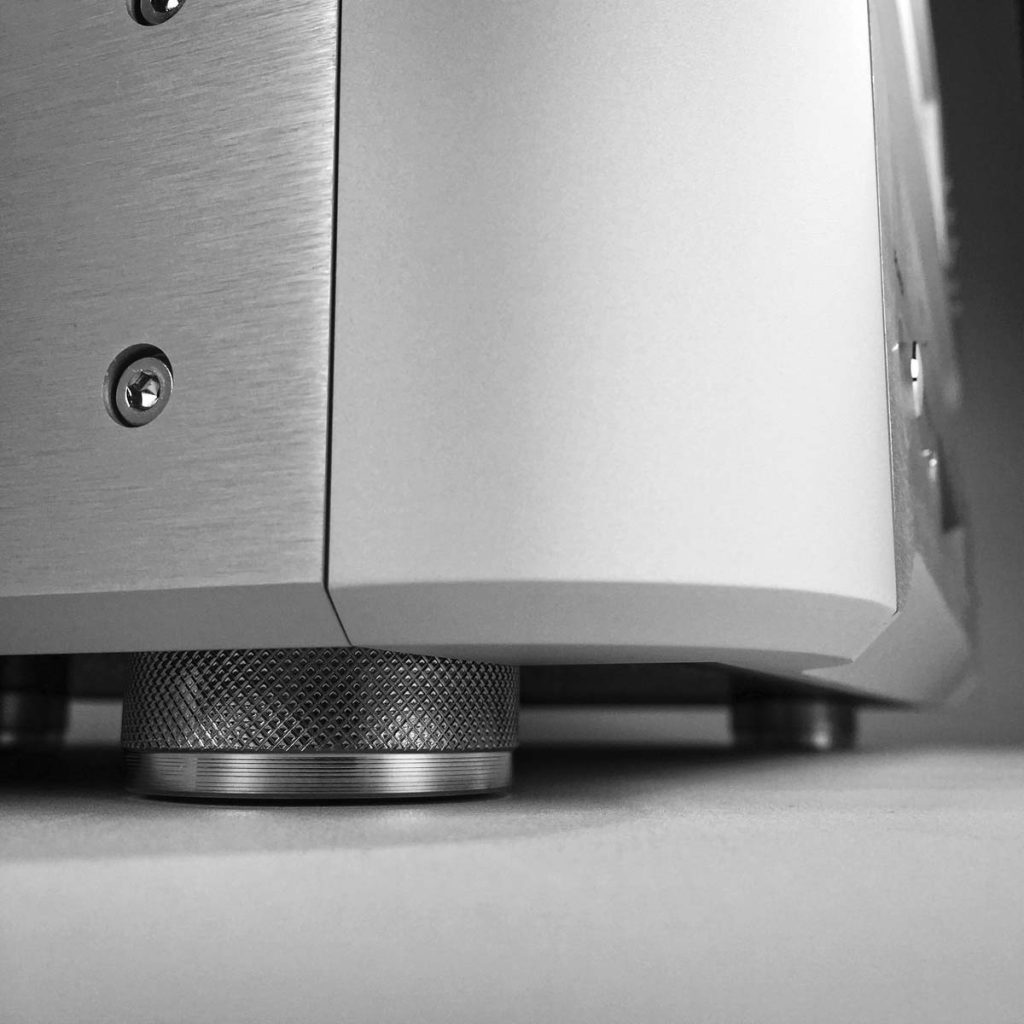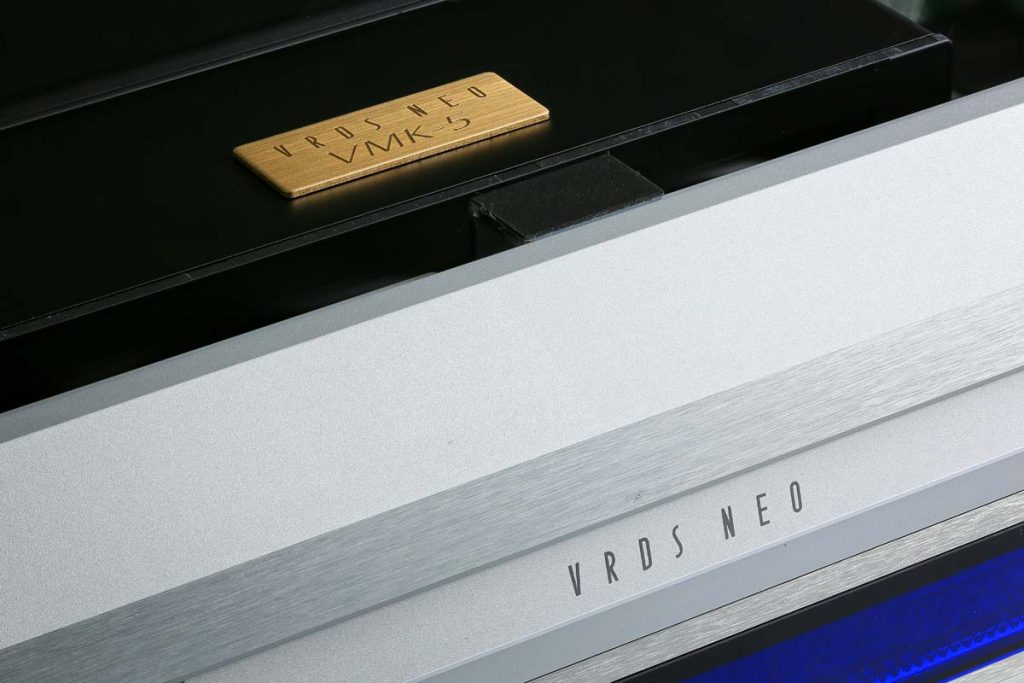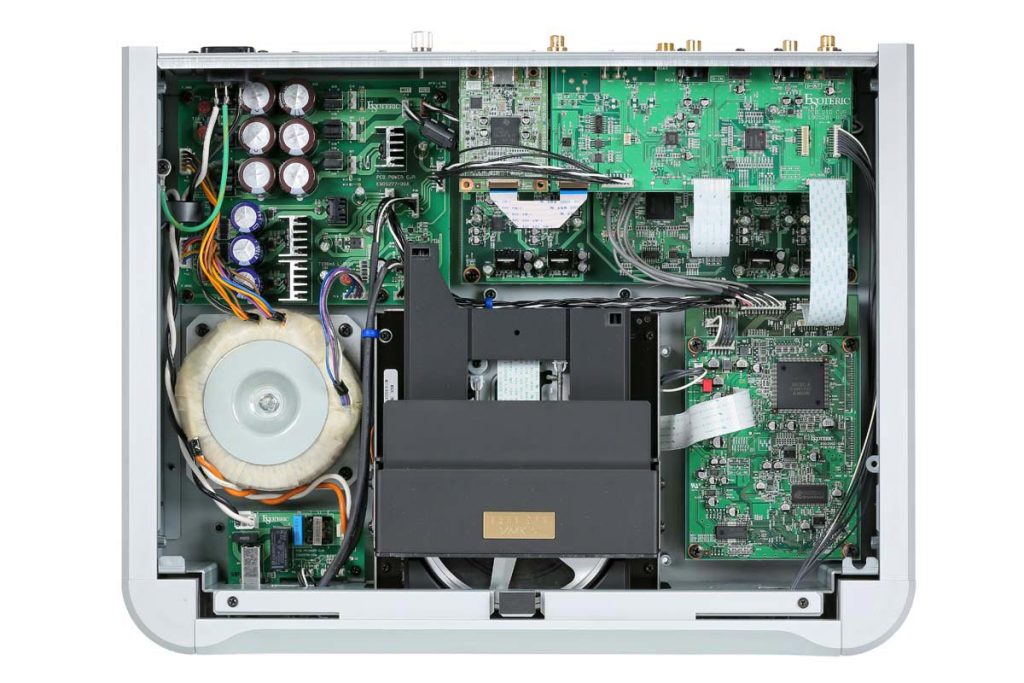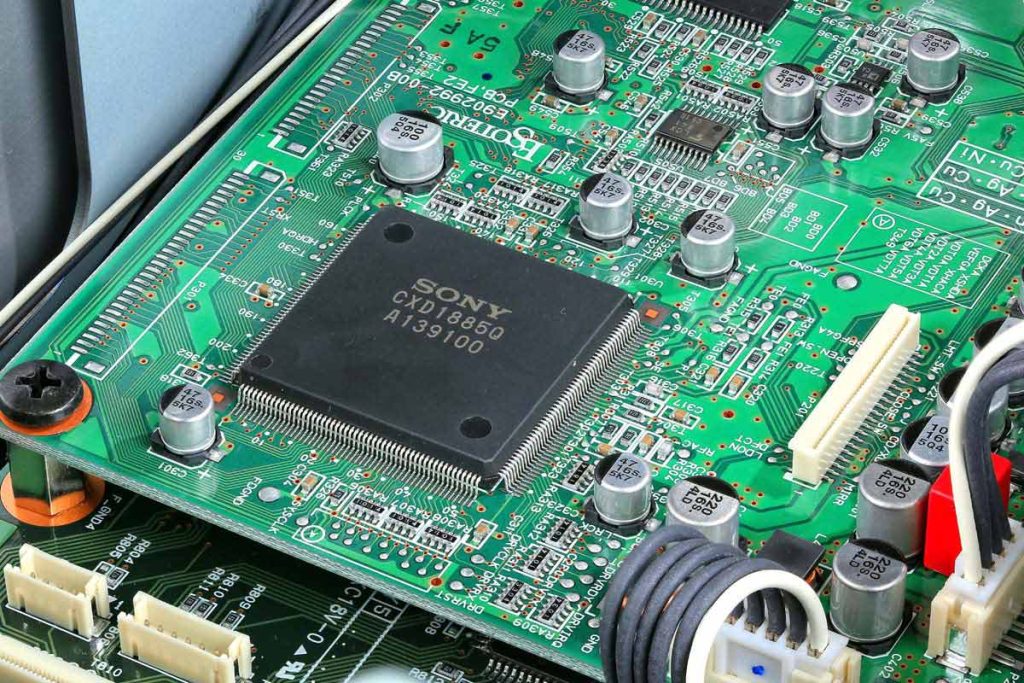The X-Factor for Audiophiles
What does “high end” actually mean? This is a subject we have all given some thought to and have formed our own individual views, criteria and opinions. Esoteric is no different.
“High-end audio” means to me equipment that brings us all closer to the essence of the music itself; this is equipment built by music enthusiasts with the necessary technical expertise and constructed using high-quality materials. Devices cobbled together in mini-small-scale series on Lego baseplates are not my thing at all. Okay, I admit I’ve listened to music on a few such creations that knocked my socks off at first. But as soon as you ask them to play a second piece, they usually start to emit strange noises or produce disturbing strobe effects. There are, however, a few global audio companies trying to address the needs of high-end clientele while also serving the standard consumer segment. The revenue these companies earn selling mass-market devices potentially gives their engineers the creative freedom they need to develop and build exceptionally high-quality equipment. Sometimes these companies can sell high-end equipment at prices that wouldn’t even begin to cover the money shelled out by certain audio tinkerers for components.
Self-driven
TEAC is a great example of such a company. I have to admit this is the very first time I’ve actually been able to conduct an in-depth test with a device from TEAC’s high-end arm, Esoteric, but over the years I have frequently come into contact with their equipment, especially digital players and transport mechanisms. These were mostly owned by audio fans with a bit of an equipment addiction or by hardcore tube freaks from Asia. Few systems from that part of the world manage to do without Esoteric components, even if it’s “only” a transport mechanism or data source for a DAC — tube based, of course. The fact that Esoteric makes superb transport mechanisms will come as no surprise to connoisseurs. And the first object in this test, Esoteric’s K-05X SACD player, contains what is probably one of the company’s most massive, critically acclaimed and complex transport components. This transport mechanism has the somewhat cumbersome name of VRDS-NEO VMK-5. As a lot has already been written elsewhere about the mass drives built by TEAC and Esoteric, I’ll just describe their most striking feature: a plate suspended from a turntable bridge that clamps the disc from above, practically eliminating vibrations and further enhancing the smoothness of (SA)CD transport. Completely developed and manufactured in-house, this mechanism is a great example of the company’s audio engineering expertise. Alone the weight of this intricately constructed transport is enough to fully distance it from the usual plastic versions, often sourced from the PC sector.
Stylish, solid, sophisticated
The virtues of the K-05X reach far beyond the extremely sturdy transport mechanism and can be found throughout the interior and the housing. Everything is exactly as it should be. As soon as you place the 14-kilogram device on your rack, you instantly have the impression — or, more precisely, you instantly realize — you’re handling materials of the absolute highest quality. I would also like to commend Esoteric for taking a decisive step away from its earlier “boxy” shape and embracing an elegant designer looks instead. Stylish yet substantial, the unit comes with a multitude of adjustable settings: upsampling and digital filters for PCM and DSD signals to mention just two of these possibilities. All settings are simple and quick to configure, and you can just as easily reverse them after you’ve tested them. The option of individually regulating upward conversion for each input — and therefore for each separate source signal — caught my attention: an interesting and practical feature that will be immediately appreciated by anyone wanting to use the K-05X’s DAC stage with other digital sources. When playing an SACD, the DSD signal is passed directly to the DAC stage. In the case of a CD, the signal can be converted to the DSD digital format — and this quickly became my preference.
Staying in sync
Esoteric claims that Generation X of the already established K-05 has been thoroughly upgraded. Alongside 32-bit dual-mono DACs, which even use a 34-bit processing algorithm, and a huge range of digital inputs, the K-05 again features a detail I’ve considered important ever since my initial experiences with Esoteric components: a connection for an external master clock generator. So, the time has now arrived to connect up the Esoteric G-02 I’ve been supplied with. By providing much greater precision, a master clock can significantly reduce jitter. This technology has been widely used in recording studios for a many years now and is often regarded as mandatory. Thanks to their wide range of selectable frequencies, the clocks from Esoteric can also be connected up to products from other manufacturers, assuming they have the necessary interface of course. Also for purposes of accommodating an external clock, the K-05X permits configuration of a different frequency for each input or signal source. If the DAC stage receives signals from a coaxial or optical input, they are synchronized with the external master clock signal. When USB input is used, the selectable clock frequencies depend on whether the sampling rate of the files is 44.1 kHz or 48 kHz or a multiple thereof. I recommend you try out the G-02’s 10 MHz signal (the standard in recording studios) for all audio file types! If you do, however, make sure you use a 50-ohm cable instead of the usual 75-ohm variety. Weighing in at around 10 kilograms, the G-02 can be swiftly configured for each of the separate inputs. Once the devices have been powered up again, the oscillator stabilizes after as little as 15 seconds. Stability has been achieved when the small control lights on the player and clock stop blinking and continuously illuminate. We could talk about technical details for considerably longer, especially in terms of the K-05X, but it’s now time to turn to the music.
A solid rock of sound
The Cello in the 17th Century (Deutsche Harmonia Mundi) is a somewhat older recording from the gifted cellist Anner Bylsma. “The Ricercari” by G. B. Degli Antonii (1687), probably earliest published pieces for cello (according at least to the booklet accompanying the CD), immediately reveal two of the K-05X’s outstanding characteristics: excellent spatial reproduction and truly wonderful control. The K-05X is in total command at all times, filling the room with rock-solid structures of music and sound. But this is not meant to imply the unit exerts any compulsion or artificial pressure. Everything appears unconstrained and natural: like speeding at 200 kilometers an hour down the autobahn in a premium sedan instead of a tiny sports car. Translated into musical terms, the steady poise of the Esoteric enables its listeners to appreciate the historical nature of these pieces by revealing Ricercari’s fundamental philosophy and composition style. Which, incidentally, found its perfection decades later in the suites for unaccompanied cello written by J. S. Bach.But let’s fast forward from the 17th century to modern times. Although Toru Takemitsu (1930–1996) wrote many wonderful pieces, not a lot of people are familiar with this contemporary Japanese composer. Takemitsu’s music is not always easy to listen to at first, but, like so much of the arts, if you take an openminded approach and persevere, you will reap a rich reward. Ideal candidates for such a personal voyage of discovery are the three solo pieces for flute on the CD Chamber Music (Naxos).
The Esoteric K-05X also proved itself to be the ideal player for these pieces: It places the flute — which has its own special timbre, particularly in the higher, overblown pitches — in a seemingly infinite space stretching in all directions. Exploiting the previously mentioned control and extension and through Takemitsu’s magical, harsh tone sequences that somewhat remind one of sounds from nature, the player seems to pull the listener right into the middle of this acoustic space — and right into the music itself. A wonderful interaction of music and machine, both, by the way, with roots in Tokyo. It’s time now for a brief excursion into jazz, with Grant Green’s The Complete Quartets with Sonny Clark (Blue Note), featuring Sam Jones on bass and Art Blakey and Louis Hayes on drums. For the Sonny Rollins classic “Oelo,” the K-05X produces amazingly springy yet well-controlled bass notes that ensure a solid, unshakable foundation for the rhythm group. Originating almost exactly 17 years before Green’s premature death in 1979, this recording captures a strong, driving rhythm in which the sound of the two main instruments, guitar and bass, need to be both differentiated and heard as mutually supportive. The Esoteric K-05X’s ability to reproduce the bass notes in their entire range of timbre is particularly noticeable when the guitar falls silent and Sonny Clark briefly takes over on piano. Now for something I had originally wanted to avoid: Johann Sebastian Bach’s St. Matthew Passion directed by René Jacobs in 2013 (harmonia mundi). Why, you might ask, did I want to avoid it? Because, after only a few brief minutes, it became clearly apparent what my favorite benchmark CD player, the AcousticPlan Vadi, doesn’t have: the ability to play SACDs. And now I know it’s some- thing I really lack. With classic in particular, many SACDs are superior to their CD counterparts — even when players like the K-05X are able to achieve a CD sound quality that comes astonishingly close to the SACD level. Nevertheless, I’ve yet to experience a device where I can unreservedly say that a CD can be played in SACD quality. Coming back to the St. Matthew Passion itself: The dynamism, depth, structure and timbre that this superb Esoteric player is able to create out of this intimate yet theatrical recording in SACD mode is truly impressive.
A farewell to jitter
Finally, I’d like to add a few comments about the master clock. After a few weeks of testing, I must honestly say that the external master clock really deserves its own detailed review. That said, I can still share a few things about it in the space available here. I recommend to everyone who owns a player that can be connected up to a master clock to actually tryout this option, and I really mean everyone. After only a few hours of listening, one thing was definitely clear to me: If I were lucky enough to actually own the K-05X, I would quickly hook it up to a G-02 and leave it like that permanently. The master clock reinforces all the positive characteristics of the standaloneK-05X. But it does this in a positive way, serving the interests of the music rather than resorting to any “razzle dazzle” or showmanship. One of the comments I noted during my tests says it all:“Music and flow perfectly in sync.”This amused me somewhat when I reread my notes later on. Although, of course, the remark was made in reference to how the music itself was being played, the presence of a synchronizing master clock like Esoteric G-02 makes it a pleasantly ambiguous comment.
The package of dreams
As a standalone player, the Esoteric K-05X is probably unrivaled in its price class. I, for one, am unaware of any other player in this price category that provides the same overall quality, outlay for materials and absolutely convincing sound. Although it is outstanding and “spot on” with CDs, the K-05X really shows how fantastic this format can sound when handling SACDs. And when the player is used in combination with the G-02 master clock (not at all a cheap piece of equipment), I would go even further: the lucky owners can enjoy a sound that ranks with the very best, in this and even higher price categories. I am yet to encounter a serious rival, particularly for classic and jazz fans. You can always opt for something even more expensive, of course. But you have to decide for yourself whether you’re getting something that is actually better from a musical and sound perspective — more often than not it’s simply something that is once again different. In any case, my congratulations to every owner of a K-05X and G-02 combo. With flawless engineering and superb workmanship, it raises the experience of music to a spectacular new level. What’s more, its wide range of inputs and configuration options means owners will have few qualms about anything the future may bring. I am prepared to bet that in five to 10 years’ time, comparable devices will be selling for far higher prices than those specified here — if they are sold at all. Why do I think that? Because the demand for real high-end units, of which Esoteric’s machines are prime examples, will probably sink in the future. Because there are a lot of people out there whose ears have been tarnished by permanent exposure to low-data and compressed sound and are therefore no longer capable of appreciating the wonderful and overwhelming emotions that music can stir. But sparking such emotions is exactly what the Esoteric K-05X and G-02 are able to do. As a consequence, their talents cannot be praised too highly. Which makes my final verdict crystal clear: The Esoteric K-05X and G-02 are prime examples of highend audio in every sense of the phrase!
Accompanying Equipment
CD players: AcousticPlan Vadi | Preamps: Shindo Aurieges L, Audio Research LS7 | Power amplifiers: Air Tight ATM 300, Jadis DA 5 (mod. Tube Audio Professional), Welter 300B (monos) | Integrated am- plifiers: Pass INT-60 | Loudspeakers: Odeon No. 38, Acapella High Fidelio, Dynavox UniQorn, Rogers LS3/5 | Cables: HMS Gran Finale Jubilée Top Match LS and XLR, HMS Energia Suprema power cord; Kondo KSL SPz, Auditorium 23 | Accessories: HMS Energia Definitiva, HMS Silenzio, HMS Perfect Match, Acoustic System resonators, Acoustic Revive RD 3 and RR 888, Black Forest Audio Zero Plugs, C + M, Shakti Stones
SACD Player
Esoteric K-05X
Digital inputs: coaxial, optical, 2 x USB 2.0 | Special features: master clock sync. (BNC), VRDS-NEO, VMK-5 transport mechanism | Digital outputs: coaxial, optical | Analog outputs: balanced, (XLR), unbalanced (cinch) | Dimensions (W/H/D): 44.5/13.5/36 cm | Weight: 14 kg | Warranty period: two years | Price: € 8,500
Master clock generator
Esoteric G-02
Dimensions (W/H/D): 44.5/11/36 cm | Weight: 10.5 kg | Warranty period: two years | Price: € 6,000
Pioneer & Onkyo Europe GmbH
Gutenbergstraße. 3
82178 Puchheim
Germany
Phone +49 8142 420810

